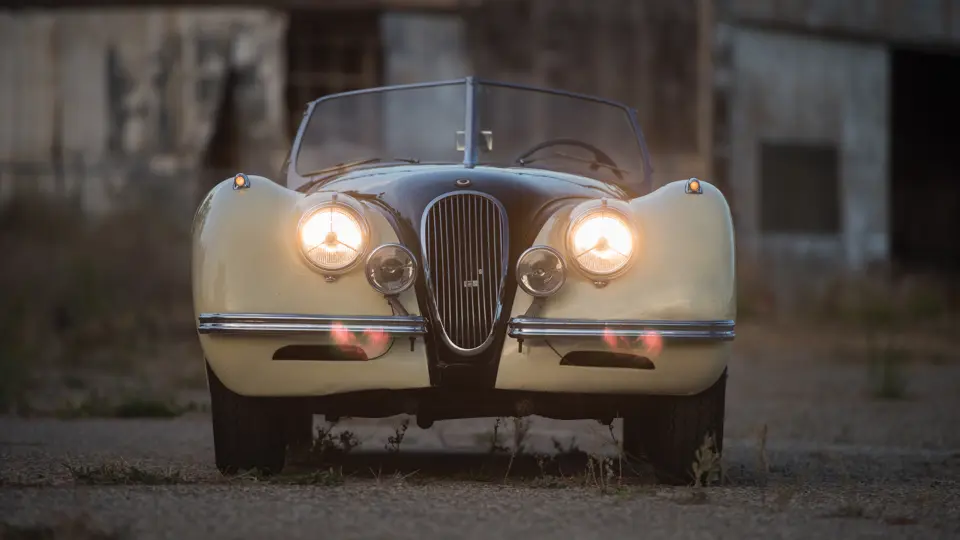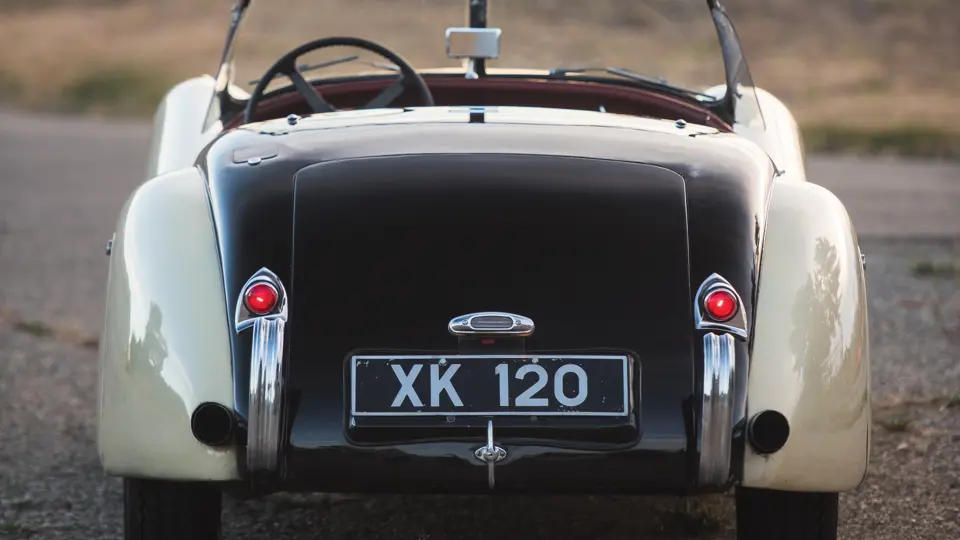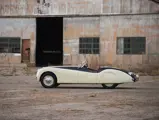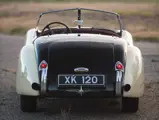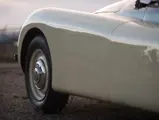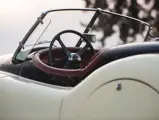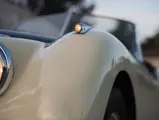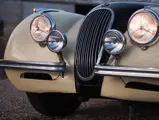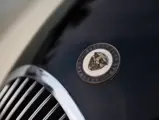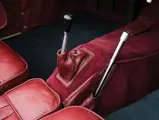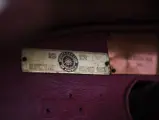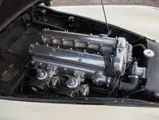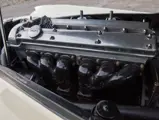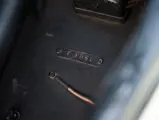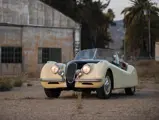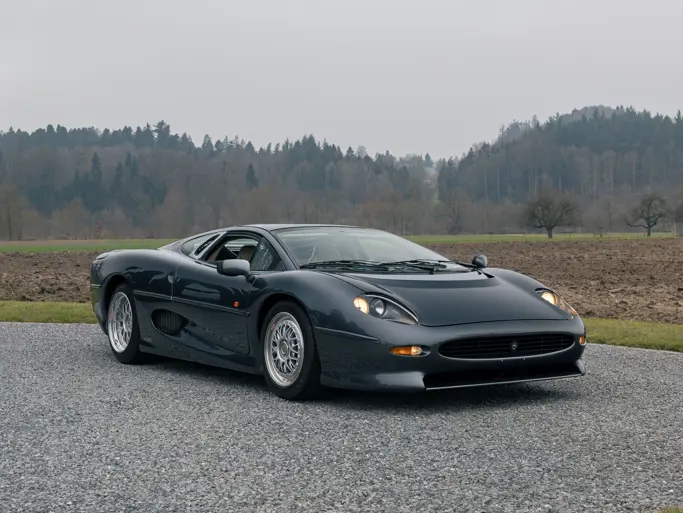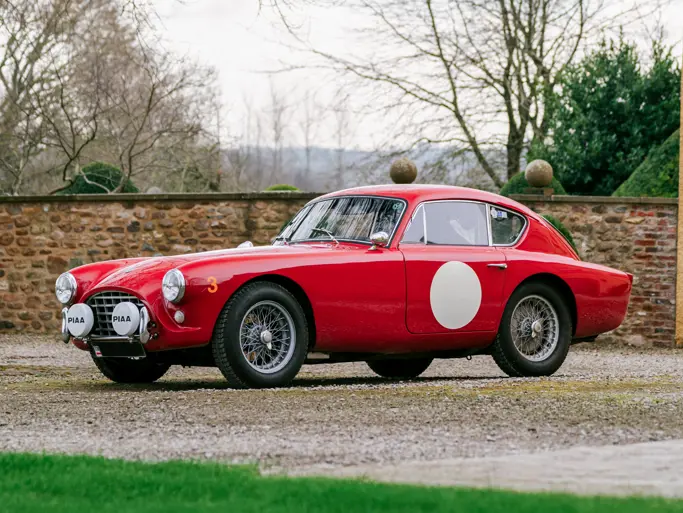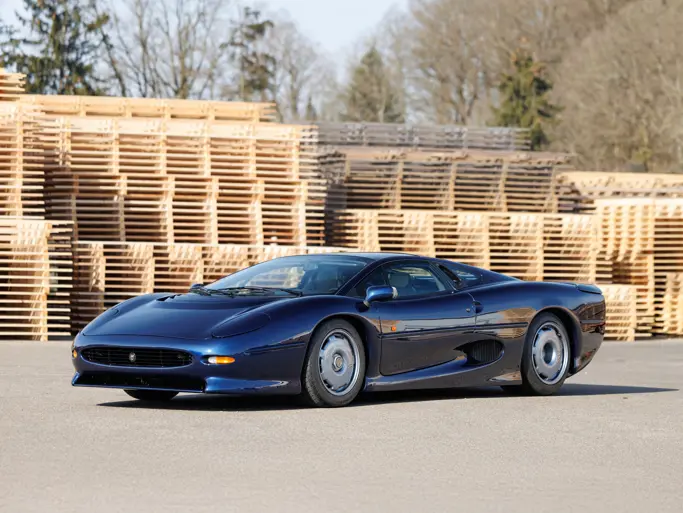
1949 Jaguar XK 120 Alloy Roadster
{{lr.item.text}}
$407,000 USD | Sold
Offered from the Craig McCaw Collection
{{bidding.lot.reserveStatusFormatted}}
- Offered from the Craig McCaw Collection
- A very early alloy XK 120; reportedly the third sold in the United States
- Purchased new and owned for 46 years by legendary designer and enthusiast Brooks Stevens
- A period competitor in SCCA events on the East Coast
- Exceptional original condition, including Stevens’ “tuxedo” house livery
- Offered with its original engine
265 bhp, 3,781 cc DOHC inline six-cylinder XKE motor with three SU carburetors, four-speed manual transmission, independent front suspension, live rear axle with semi-elliptical leaf springs, and four-wheel drum brakes. Wheelbase: 102 in.
In 1982, automotive historian Richard Langworth paid tribute to his friend Brooks “Kip” Stevens with an article for the October issue of Special Interest Autos.
The piece, titled “The Seer Who Made Milwaukee Famous,” does focus appropriately on Stevens’ pioneering industrial design work, which included the Oscar Meyer Wienermobile, multiple important post-war Studebakers, and the Miller brewing logo. However, it is more about the man himself, “a tall, good looking man who belied his age, whose appearance and demeanor reflected accreditation to what Cole Porter would have called High Society. He was, indeed, cast in ‘Colie’s’ image. For Stevens there was only one way to fly to Paris—Concorde—and one way to travel to England in the summertime—first class on the QE2. His personal tastes reflected similar standards, producing an effort of refined elegance. In his presence people were impressed but not overawed, because he was so completely natural and so full of courtesy and fun.”
That same easy sense of high style that characterized Stevens also included his automobiles, of which there were many. His varied collection began with his first car, a Cord L-29 that he had customized to his own design, and grew to contain an example of many fine Classics, modern sports cars, and personal copies of his designs for Studebaker and Kaiser-Frazer. Here, too, Stevens’ sense of sartorial splendor was in play. Open cars were all finished in two-tone black and cream; closed cars were all French Racing Blue.
It made sense that an elegant sportsman of means would be one of the first Americans to buy the hottest sports car to come out of post-war Europe, the Jaguar XK 120. Stevens purchased an early alloy-bodied example, this car, chassis number 670047, reportedly the third XK 120 in the United States, and promptly had it repainted in the “tuxedo” colors. He then set about racing it at Watkins Glen and his local circuit, Elkhart Lake in Wisconsin; the car is known to have participated in the 1950 Seneca Cup at the Glen, finishing 7th overall, as well as the Janes Hill Airport Race in 1952. One of the brass plaques still found in its interior recognizes Stevens’ role as Activities Chairman for the SCCA’s Milwaukee Region in 1950.
Stevens never sold the Jaguar, which he continued to bring to Midwestern concours and JCNA events until well into the early 1990s. Only following his passing in 1996, 46 years after he purchased the XK 120, was it sold by his family to well-known California enthusiast Don Sears, and in 1999, it was acquired by legendary collector Roger Morrison of Salina, Kansas. Mr. Morrison later sold the car to Craig McCaw, in whose own wonderful stable it has remained a well-maintained favorite ever since.
The delicious originality of this car cannot be overstated. Much of its paint is the original Stevens job from 1950. The red leather interior is wonderfully intact, down to the door pulls, while the original red carpeting is still found within the trunk, and the chrome is patinated beautifully. To aid the continued preservation of this car, a set of replacement seat cushions, seat backs, and even an armrest that can easily be swapped in place of the originals, accompany the sale of the car.
Looking at the untouched surfaces of the engine bay, both the chassis and body number plates are original and exactly where one would hope to find them. The car is presently powered by a 3.8-liter E-Type engine, installed as a vintage rally powerplant; the original engine, number W 1078-8, is perfectly usable and original and was simply removed from the car to save it while the XK 120 continued to be driven and enjoyed. The original engine accompanies the car along with a wonderful history file, documenting its Stevens and SCCA history as well as its subsequent ownerships. Also accompanying the car are side curtains, a tonneau cover, the convertible top with its original Alloy-specific chrome frame, a spare radiator, and a series of blown-up photographic prints from early in its life. The Stevens Alloy looks like what it is—a car that was raced and enjoyed but also taken care of by only a handful of conscientious owners in its long life.
Surely few alloy XK 120s worldwide have survived in such superb original, unrestored order. None of them carries such panache, character, and cultivated charm as this car, which is the mechanical embodiment of the well-dressed gentleman, as at home on Elkhart Lake as on a Cunard liner.

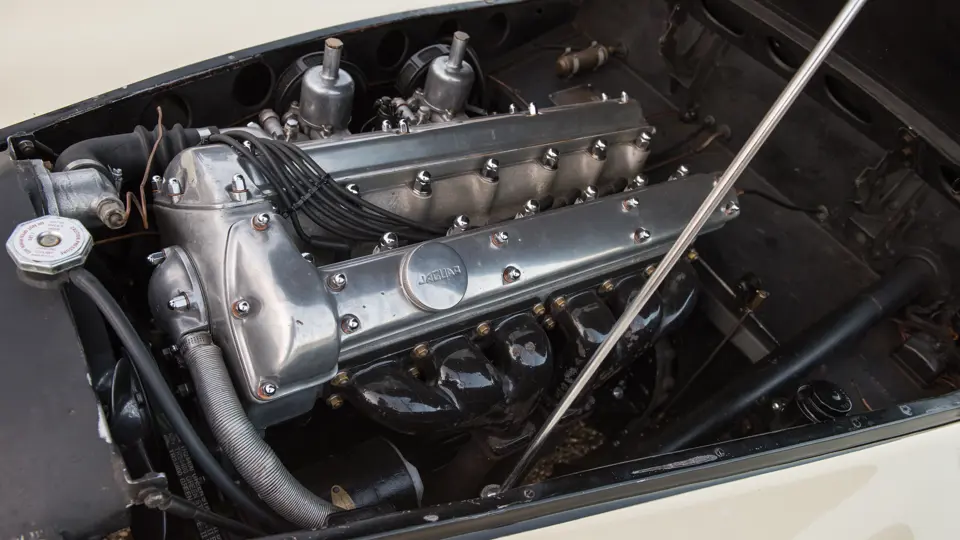



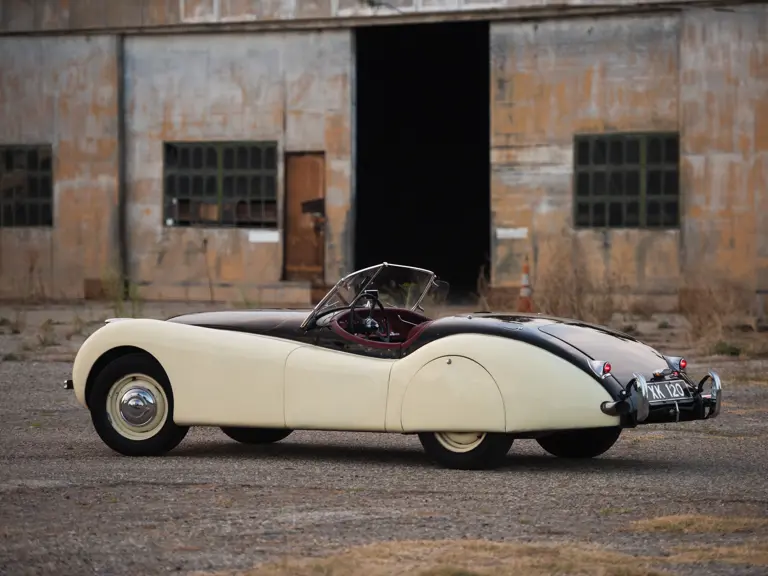
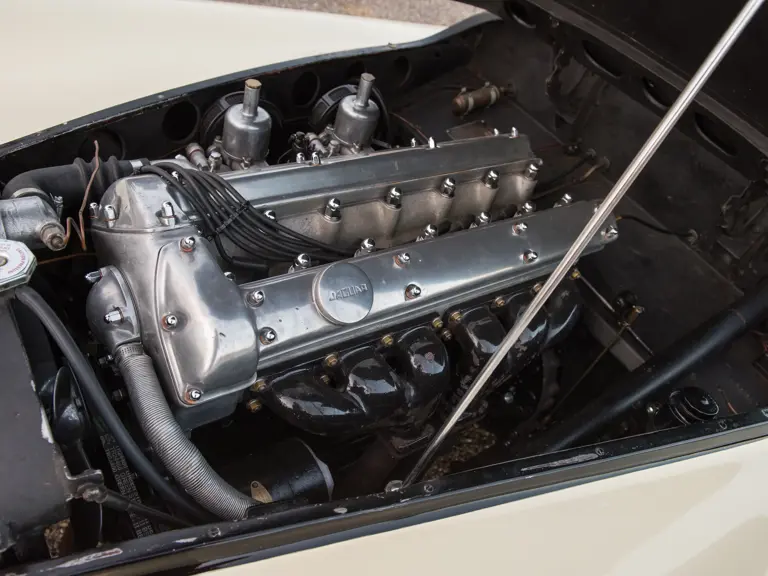
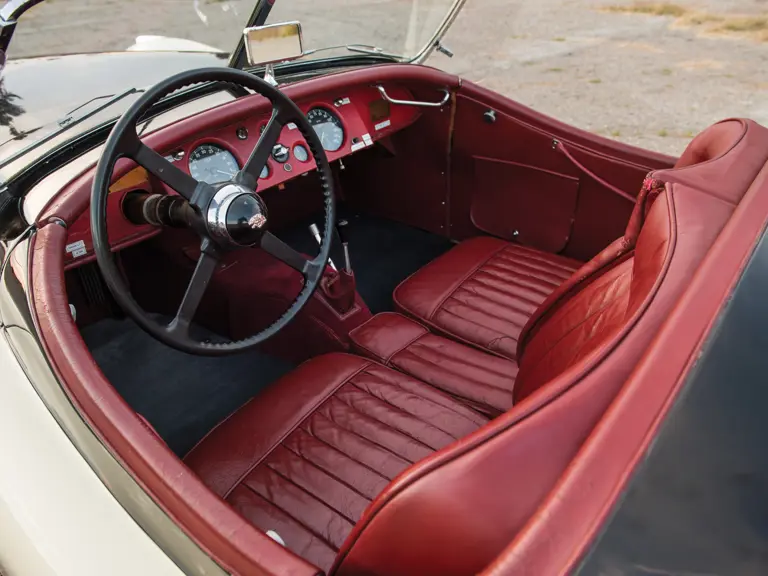
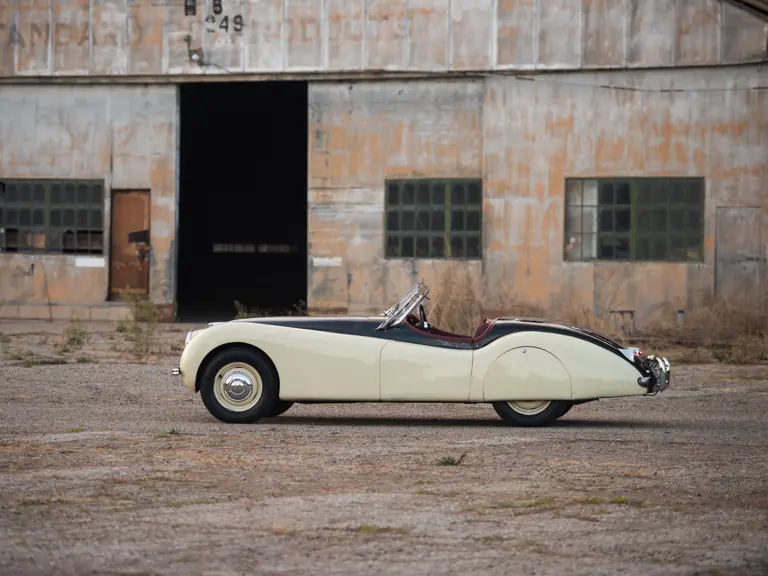
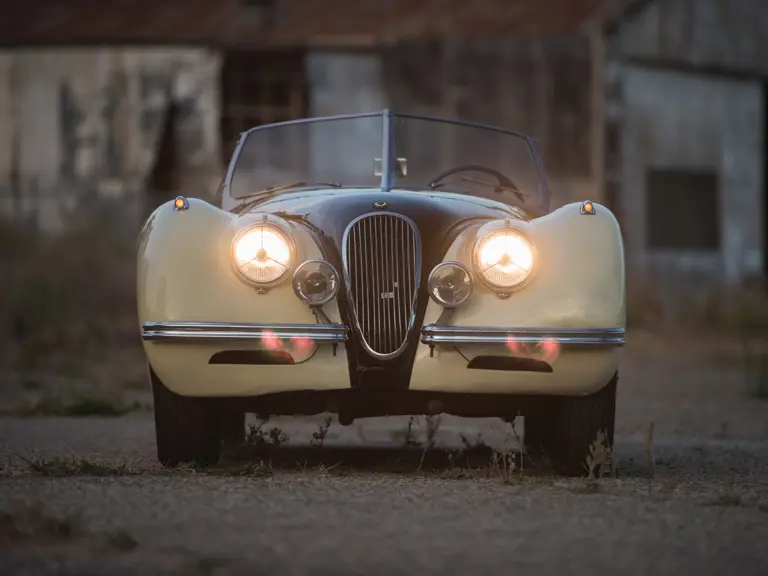
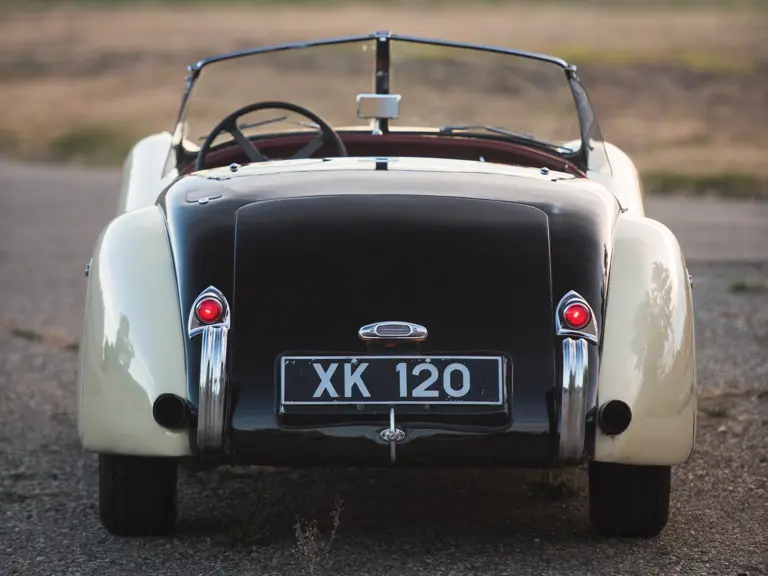
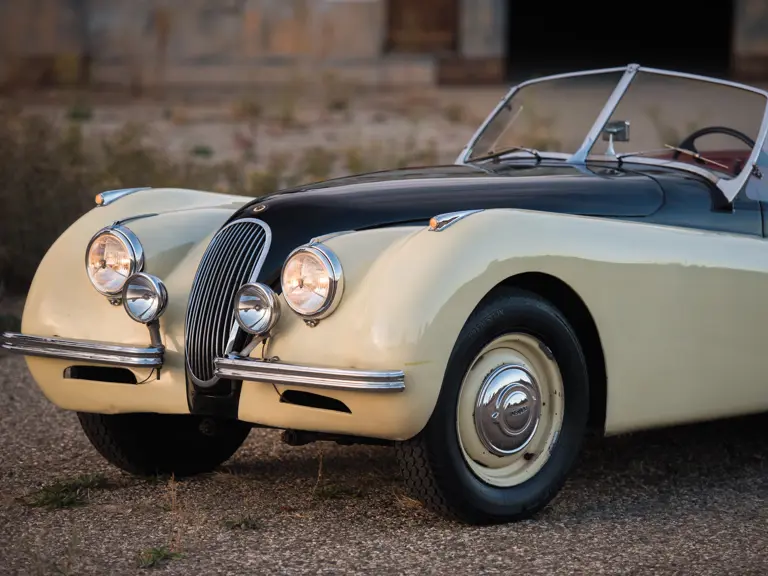


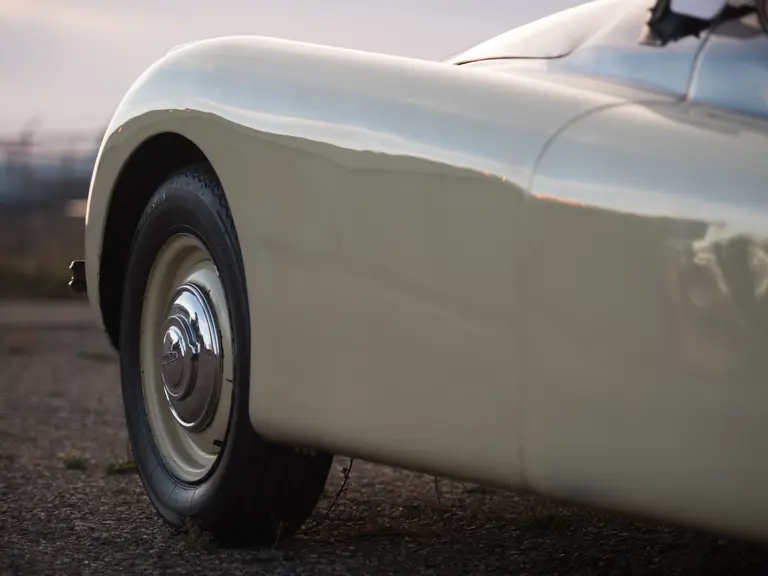
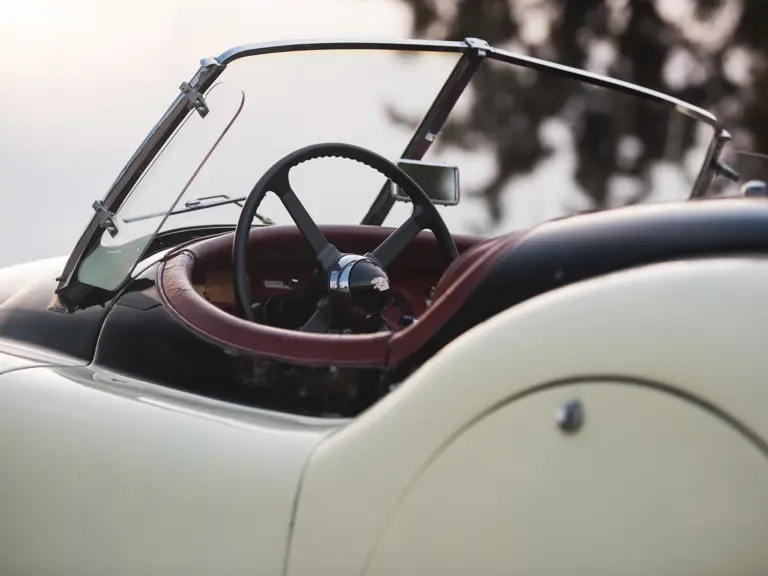


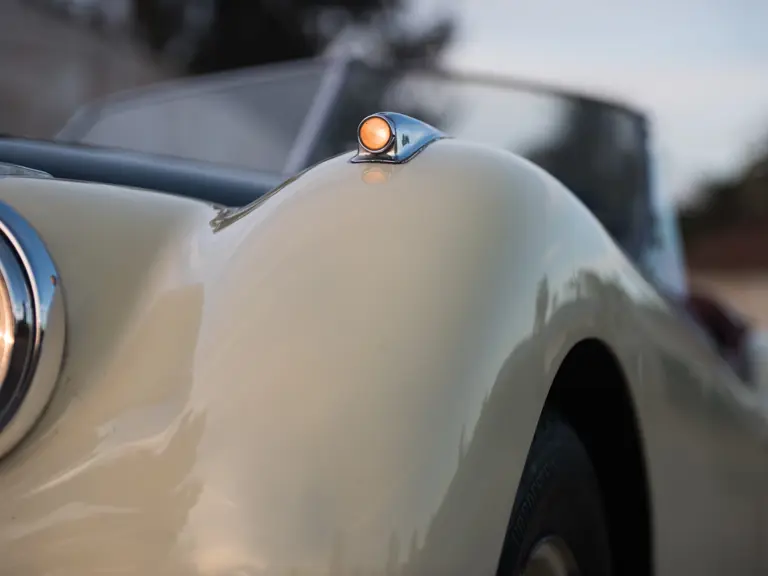


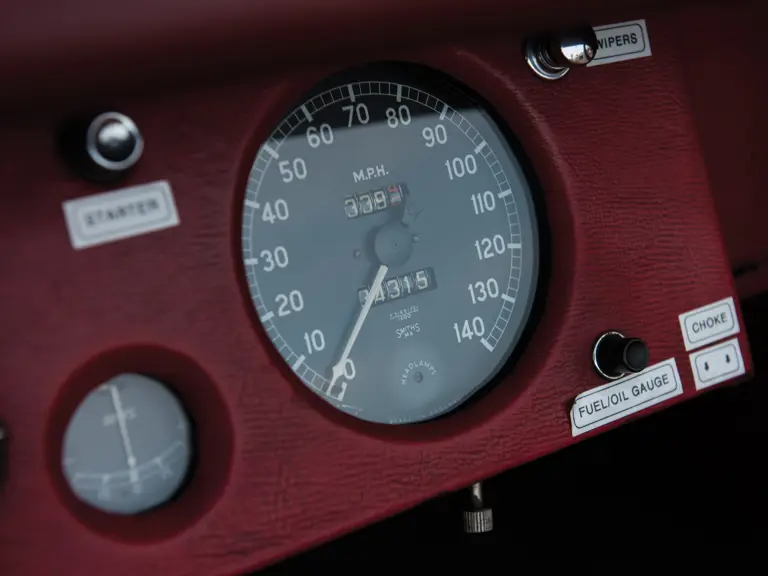
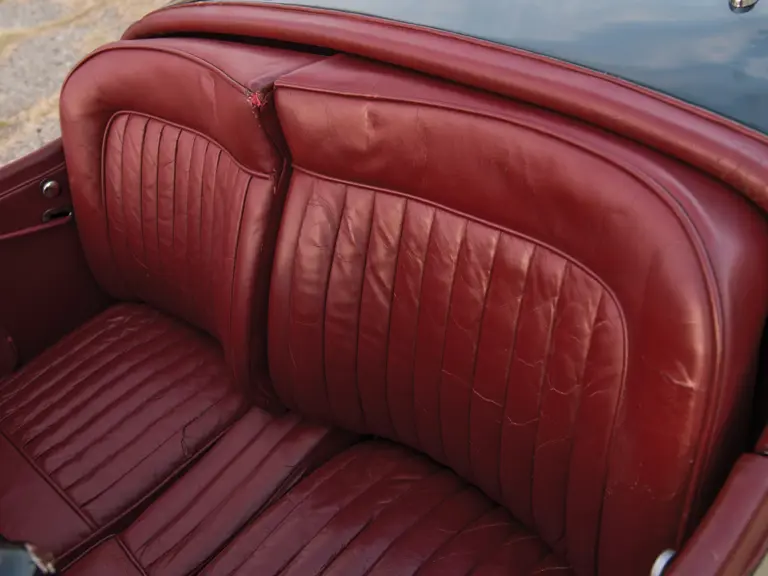
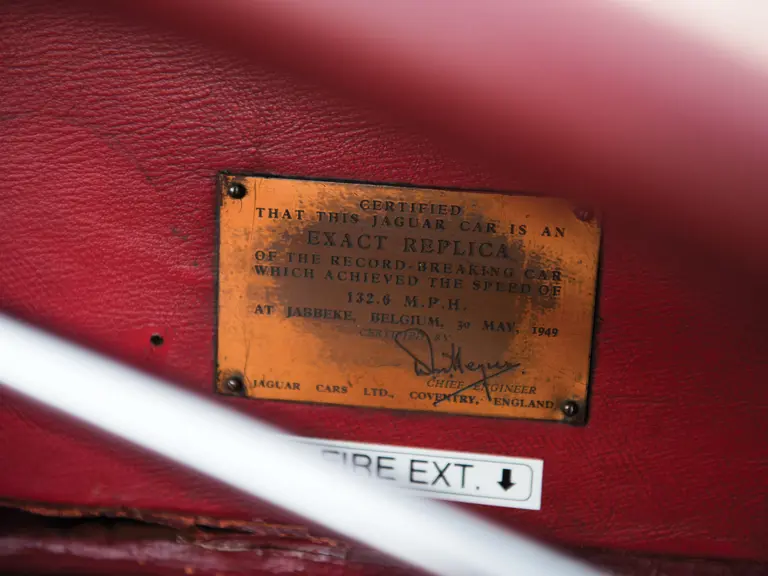


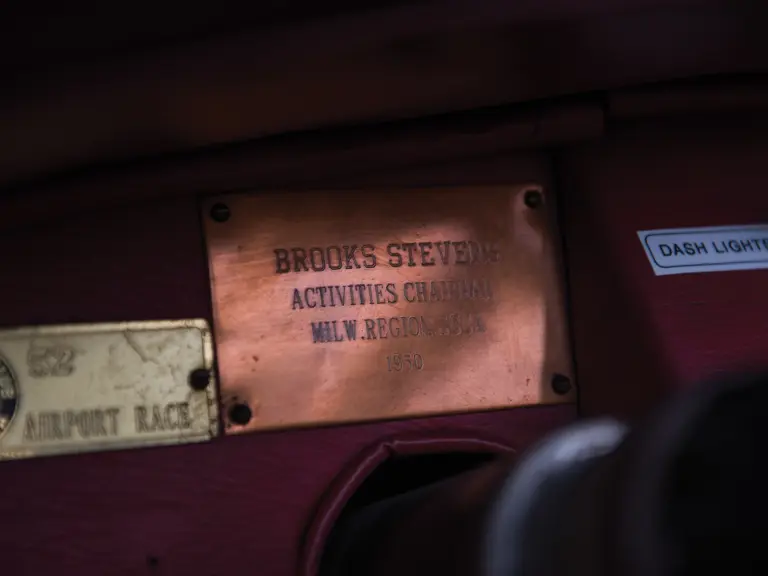
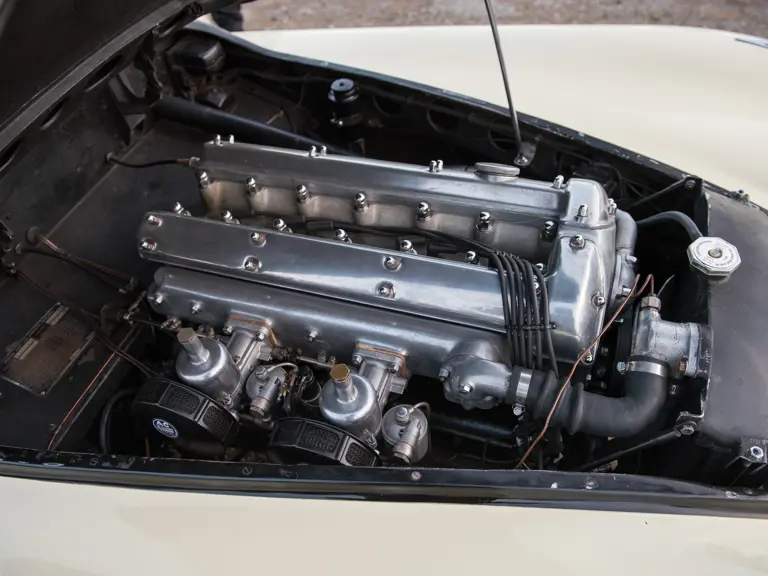

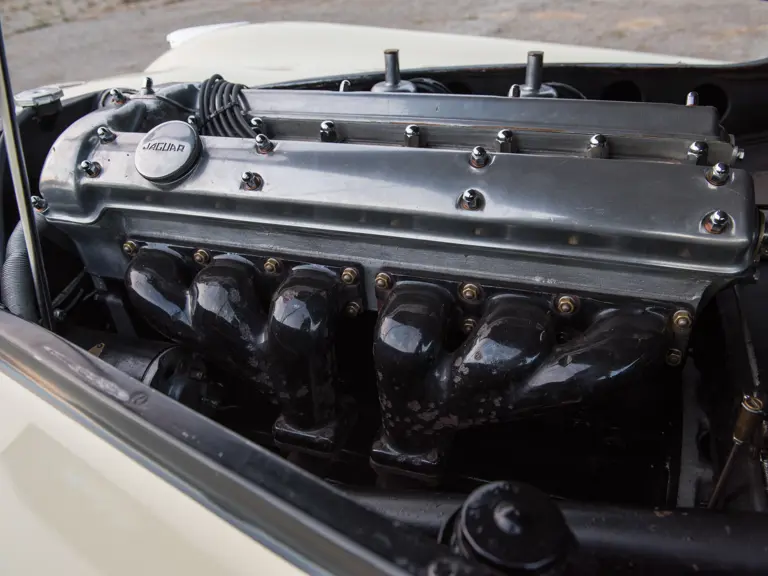
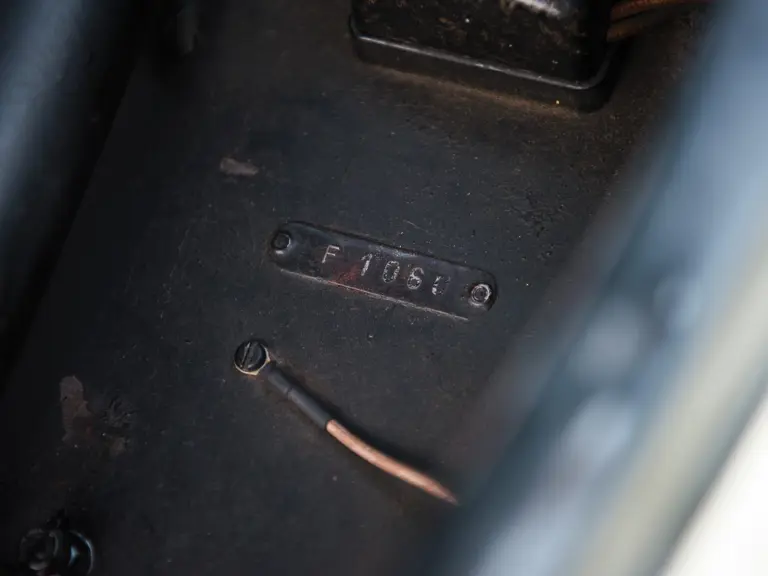

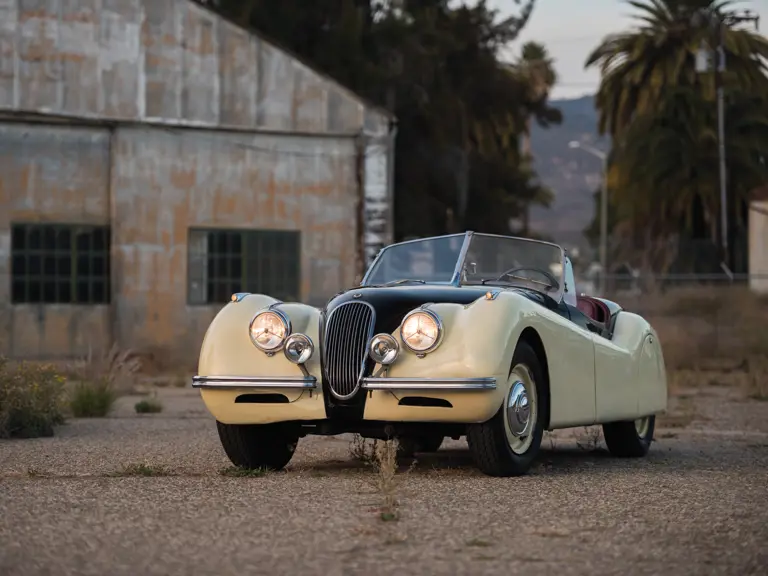
 | Phoenix, Arizona
| Phoenix, Arizona

